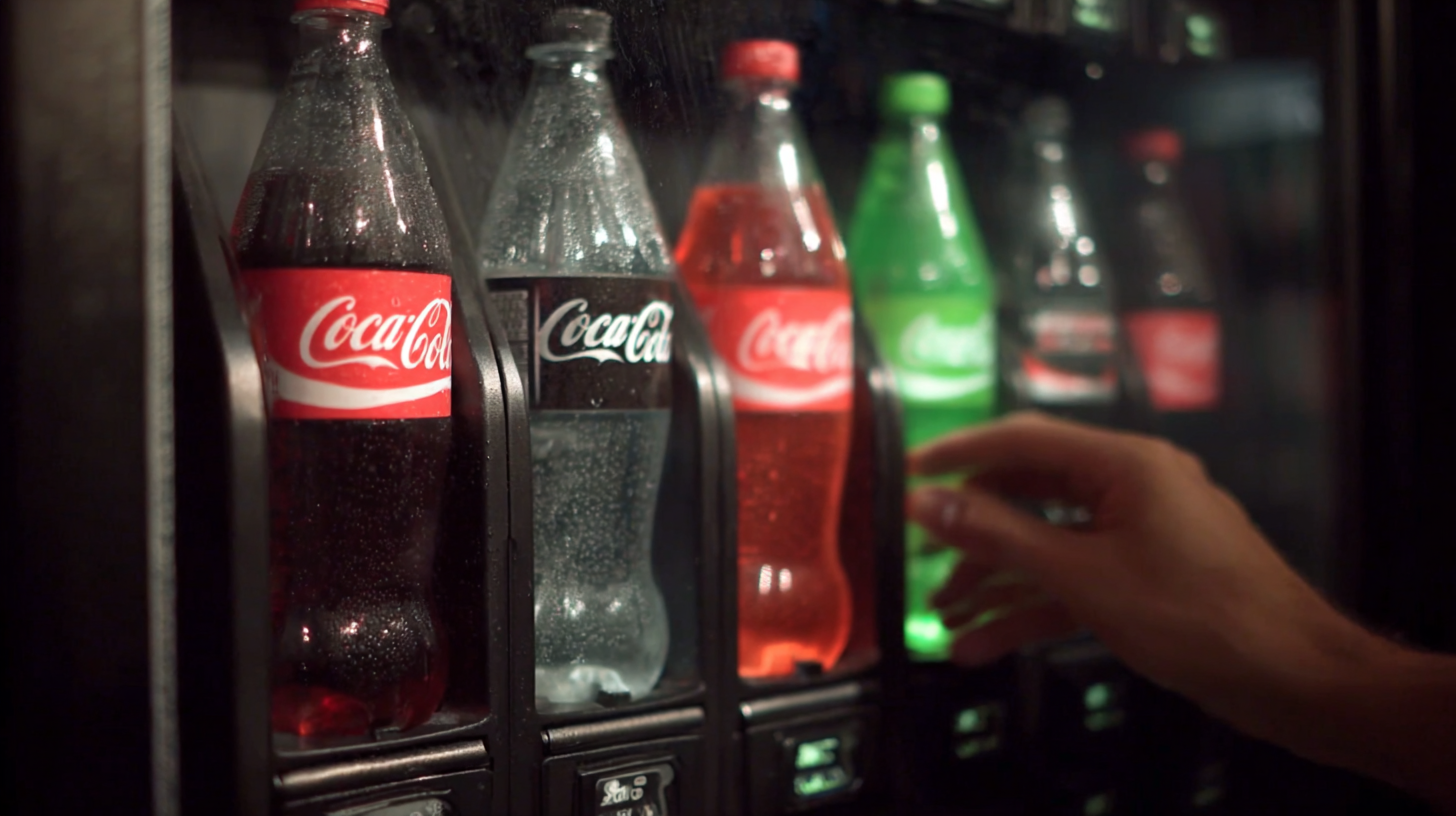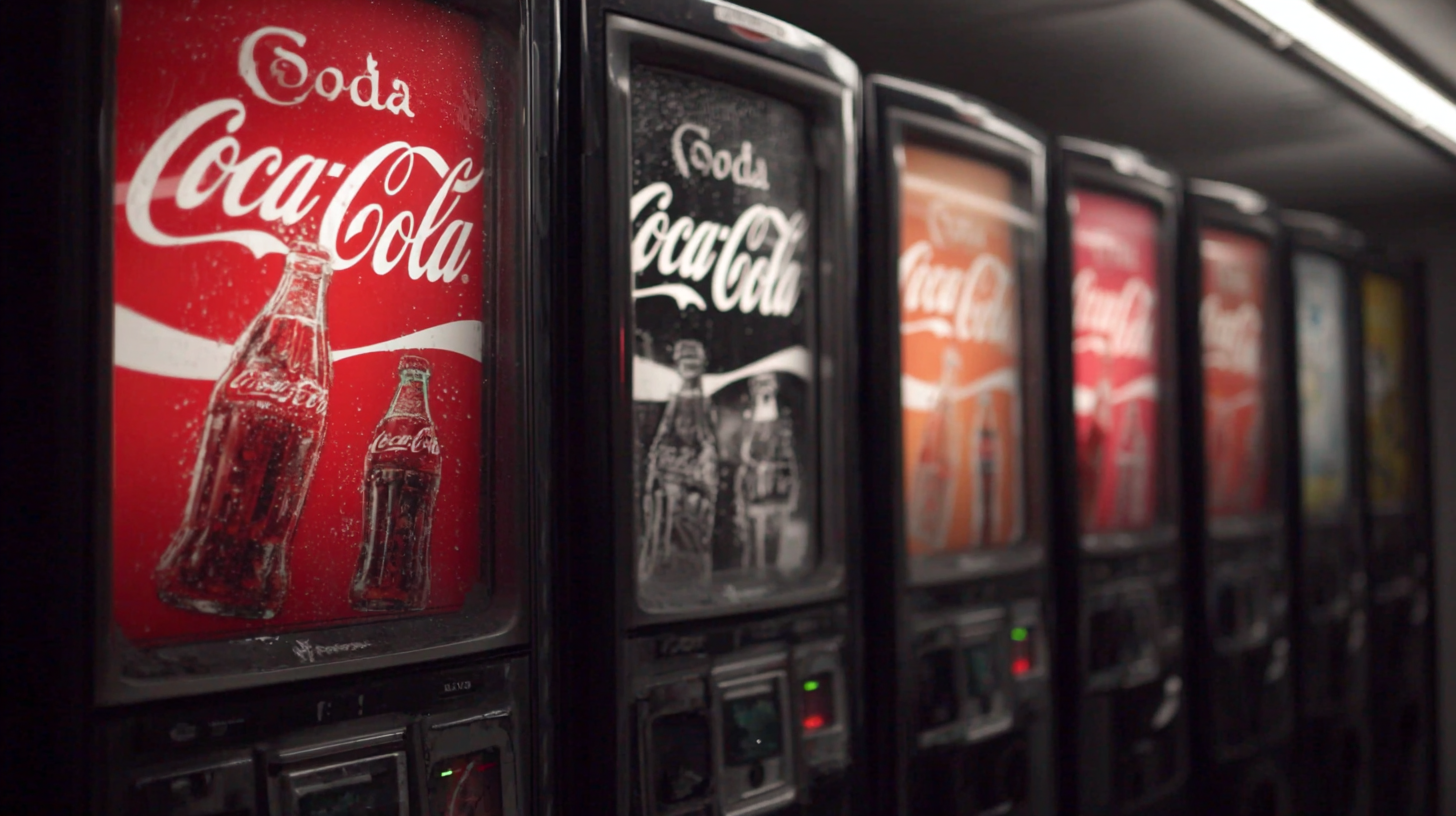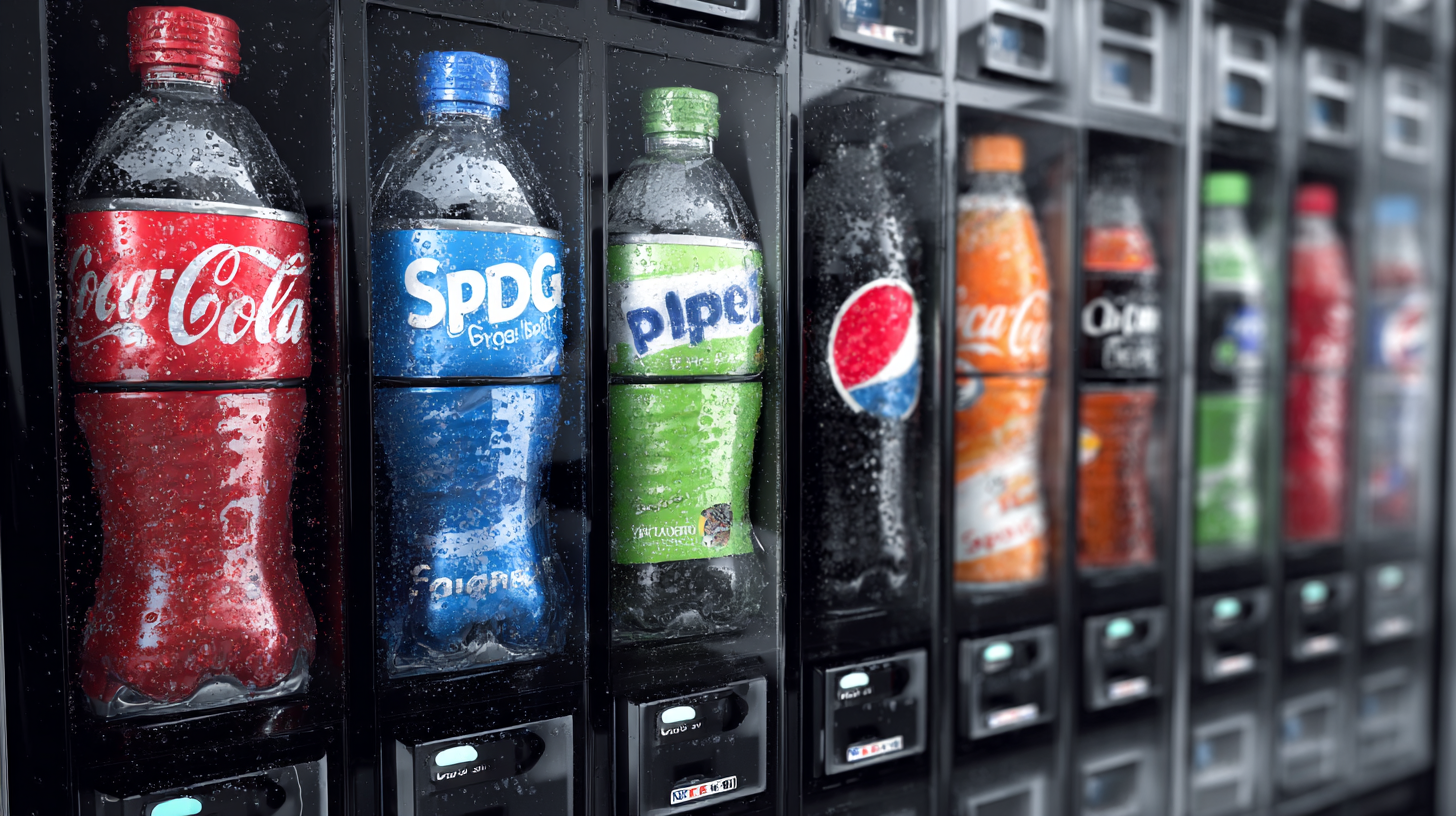In the realm of automated retail solutions, the soda vending machine stands out as a quintessential example of efficiency and convenience. As markets across the globe continue to evolve, manufacturers face the complex task of navigating diverse global standards and unique challenges in the production of these popular machines. Different types of soda vending machines offer distinct features and are suitable for varied environments, ranging from bustling urban centers to remote locations.

This blog aims to explore the characteristics and applicability of various soda vending machine models, delving into the essential factors that influence their design, functionality, and compliance with international regulations. By understanding these dimensions, stakeholders can make more informed decisions in the dynamic landscape of vending machine production and distribution.
Understanding global standards in soda vending machine production is crucial for manufacturers aiming to succeed in diverse markets. These standards encompass various aspects including safety, efficiency, and environmental considerations, which vary significantly across regions. For instance, compliance with the International Organization for Standardization (ISO) guidelines ensures that machines not only meet operational efficiency but also adhere to safety protocols to protect consumers. Manufacturers must familiarize themselves with regulations specific to each target market, such as FDA requirements in the United States or CE marking standards in Europe, to avoid costly fines and ensure customer trust.
Moreover, global standards also address technological advancements and the integration of smart features in vending machines. As consumer preferences shift towards cashless transactions and real-time inventory management, manufacturers are increasingly required to incorporate these innovations while remaining compliant with regulatory frameworks. Emphasizing sustainability through energy-efficient designs and eco-friendly materials can elevate a brand's reputation. By aligning production practices with global standards, soda vending machine producers can navigate the complexities of international markets, fostering both compliance and competitive advantage.
| Dimension | Standard/Regulation | Region | Challenge |
|---|---|---|---|
| Energy Efficiency | ISO 50001 | Global | Integration of renewable energy sources |
| Safety Standards | UL 60335 | North America | Compliance with local electrical safety codes |
| Materials Compliance | REACH Regulation | Europe | Sourcing compliant materials |
| Digital Security | PCI DSS | Global | Protecting customer payment data |
| Environmental Impact | ISO 14001 | Global | Waste management and recycling |
 In the highly competitive market of soda vending machines, manufacturers face several key challenges that can hinder their production efficiency and market success. One major obstacle is the rapidly changing technology landscape. According to a recent industry report by Grand View Research, the global vending machine market is expected to reach $25 billion by 2025, emphasizing the need for manufacturers to continuously innovate and integrate advanced features such as cashless payment systems and smart inventory management. Failing to adapt to these technological advancements can result in significant loss of market share.
In the highly competitive market of soda vending machines, manufacturers face several key challenges that can hinder their production efficiency and market success. One major obstacle is the rapidly changing technology landscape. According to a recent industry report by Grand View Research, the global vending machine market is expected to reach $25 billion by 2025, emphasizing the need for manufacturers to continuously innovate and integrate advanced features such as cashless payment systems and smart inventory management. Failing to adapt to these technological advancements can result in significant loss of market share.
Another critical challenge involves navigating global standards and regulations. Compliance with international safety and quality standards is essential for market access, particularly in regions like Europe and North America. A survey conducted by IBISWorld indicates that businesses face an average of 20% increase in costs due to compliance measures. Manufacturers must invest in thorough testing and certification processes to ensure that their products meet these stringent regulations.
Tip: Consider forming strategic partnerships with technology firms to enhance product features and streamline manufacturing processes. This collaboration can accelerate innovation while reducing operational costs.
Tip: Stay informed about the latest regulatory changes in key markets. Engaging with compliance experts can help navigate these complexities efficiently, ensuring smooth entry into new regions.
In the competitive landscape of soda vending machine production, compliance with international quality regulations is paramount. The International Organization for Standardization (ISO) indicates that nearly 80% of manufacturers face challenges in adhering to global standards. To navigate these complexities, businesses can implement key strategies that enhance compliance while promoting product excellence.
Firstly, manufacturers should invest in comprehensive training programs focused on international quality standards such as ISO 9001. A recent report by MarketsandMarkets highlights that organizations that prioritize employee training see a 30% reduction in compliance-related errors. This commitment not only fosters a culture of quality but also equips employees with the necessary knowledge to meet compliance requirements effectively.
Secondly, leveraging technology can streamline adherence to quality regulations. Real-time monitoring systems, as noted in a study by Frost & Sullivan, can improve compliance by up to 25% through enhanced data analytics. By implementing these technologies, producers can ensure that their soda vending machines consistently meet contractual obligations and customer expectations, ultimately securing a competitive advantage in the global market.
In today's fast-paced world, the evolution of vending machines, especially soda vending machines, goes beyond simply dispensing drinks. Innovative features have emerged to enhance the user experience, making these machines not just convenient but also engaging. Touchless payment options, for instance, have revolutionized transactions, allowing users to make purchases swiftly and safely while minimizing physical contact. Furthermore, machines equipped with smart technology can provide real-time inventory updates, ensuring that customers always have access to their favorite beverages without disappointment.
Moreover, the integration of personalized recommendations based on user preferences is transforming the way consumers interact with vending machines. By utilizing artificial intelligence and data analytics, these machines can suggest drinks that align with a user's taste profile, thereby enhancing the overall purchasing experience. Additionally, features like energy-efficient designs and eco-friendly packaging options reflect a growing commitment to sustainability, appealing to environmentally conscious consumers. As technology continues to advance, the future of soda vending machines promises to be more user-centric, prioritizing convenience, personalization, and sustainability.

In the competitive landscape of soda vending machine production, efficient production and supply chain management are crucial for success. To optimize these processes, manufacturers must adopt strategic measures that streamline operations. One effective approach is to implement lean manufacturing principles, which focus on minimizing waste while maximizing productivity. By refining workflows and eliminating bottlenecks, companies can enhance their overall efficiency and responsiveness to market demands.
To ensure seamless supply chain management, maintaining strong relationships with suppliers is paramount. Regular communication and establishing clear expectations can lead to better collaboration and timely deliveries. Additionally, diversifying the supplier base can mitigate risks associated with disruptions, thereby bolstering the stability of the supply chain.
Tip: Consider integrating technology solutions such as inventory management software to track materials and automate ordering processes. This proactive approach not only reduces lead times but also helps in forecasting demands more accurately.
Tip: Regularly train employees on best practices in both production and supply chain dynamics. An informed workforce is essential for adapting to changes and driving continuous improvement throughout the organization.
Serving the Vending Industry Since 1931
Vending.com is the “factory direct supplier” of new and factory “Certified” re-manufactured vending machines, including combo, snack, cold drink, coffee, cold and frozen food, and custom vending machines, all proudly manufactured in the U.S.A.
No need to “pay cash” for your equipment. Up to 100% financing can be provided by our company. Check out our short video to see why Vending.com is the #1 choice for profitable vending!
© 2025, www.actionguardvending.com. All rights reserved.
| Cookie | Duration | Description |
|---|---|---|
| cookielawinfo-checkbox-analytics | 11 months | This cookie is set by GDPR Cookie Consent plugin. The cookie is used to store the user consent for the cookies in the category "Analytics". |
| cookielawinfo-checkbox-functional | 11 months | The cookie is set by GDPR cookie consent to record the user consent for the cookies in the category "Functional". |
| cookielawinfo-checkbox-necessary | 11 months | This cookie is set by GDPR Cookie Consent plugin. The cookies is used to store the user consent for the cookies in the category "Necessary". |
| cookielawinfo-checkbox-others | 11 months | This cookie is set by GDPR Cookie Consent plugin. The cookie is used to store the user consent for the cookies in the category "Other. |
| cookielawinfo-checkbox-performance | 11 months | This cookie is set by GDPR Cookie Consent plugin. The cookie is used to store the user consent for the cookies in the category "Performance". |
| viewed_cookie_policy | 11 months | The cookie is set by the GDPR Cookie Consent plugin and is used to store whether or not user has consented to the use of cookies. It does not store any personal data. |